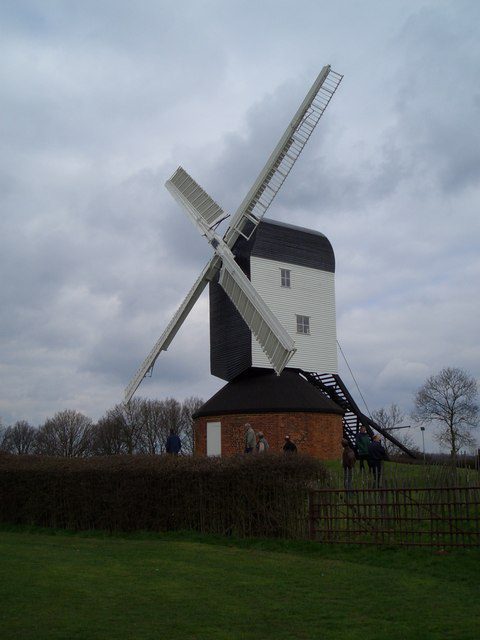American Pale Ales (APAs) have emerged as one of the most beloved beer styles in the craft beer revolution. With their vibrant hop character, balanced malt backbone, and refreshing drinkability, APAs have captured the hearts of beer enthusiasts around the world. In this comprehensive guide, we will explore the rich history, defining characteristics, brewing techniques, and notable examples of American Pale Ales. Get ready to delve into the world of hop-forward delight and discover what makes APAs a true celebration of craft beer.
History and Origins
APAs trace their origins back to the 1980s when American brewers sought to create a uniquely American beer style that showcased the vibrant hop varieties grown in the United States. Inspired by the traditional English Pale Ales, these brewers aimed to amplify the hop character while maintaining a balanced and approachable beer. The first commercially successful APA was Sierra Nevada Pale Ale, which was introduced by Sierra Nevada Brewing Co. in 1980. Since then, APAs have grown in popularity and become a staple in the craft beer movement.
Characteristics of American Pale Ales
APAs are characterized by their harmonious blend of hop-forward flavours, balanced malt profile, and moderate alcohol content. Here are the key characteristics that define American Pale Ales:
Hop Profile
APAs showcase an assertive hop presence, with an emphasis on American hop varieties known for their vibrant aromas and flavours. Citrus, pine, floral, and tropical fruit notes are commonly found in APAs, contributing to their aromatic complexity and refreshing character.
Malt Backbone
While hops take the spotlight in APAs, a well-balanced malt backbone provides a solid foundation. The malt profile often includes a combination of pale malts and a touch of specialty malts to add complexity and depth, while still allowing the hops to shine.
Moderate Bitterness
APAs feature a moderate level of bitterness that supports and balances the hop and malt flavours. Bitterness is achieved through early hop additions during the brewing process and is typically measured using the International Bitterness Unit (IBU) scale, ranging from 30 to 50 IBUs.
Refreshing and Approachable
Unlike their more intense counterpart, India Pale Ales (IPAs), APAs offer a more approachable and sessionable drinking experience. With a moderate alcohol content typically ranging from 4.5% to 6%, APAs are designed to be enjoyed in multiple servings, allowing beer lovers to savour their hop-forward character without overwhelming the palate.
Brewing Techniques
Brewing a stellar American Pale Ale requires careful attention to technique and ingredient selection. Here are some essential brewing techniques to create a top-notch APA:
Grain Bill
The grain bill for an APA typically consists of base malt, such as American two-row barley, which provides a clean and neutral foundation. Speciality malts, such as crystal malts, may be added in small amounts to add complexity and contribute to the beer’s colour.
Hop Selection
Hop selection is crucial in APAs, as they define the beer’s aromatic and flavour profile. American hop varieties like Cascade, Centennial, Citra, Amarillo, and Simcoe are commonly used for their vibrant citrus, floral, and pine characteristics. Late hop additions, known as whirlpool and dry hopping, are employed to enhance the hop aroma and create a delightful sensory experience.
Fermentation
A clean and neutral yeast strain is typically chosen for APAs to allow the hop character to shine. American ale yeast strains, such as California Ale yeast (WLP001), are often used to accentuate the hop flavours while providing a clean fermentation profile. Controlling fermentation temperature and ensuring proper yeast health is critical to achieving the desired beer characteristics.
Dry Hopping
Dry hopping is a common technique used in APAs to enhance the hop aroma and contribute to the beer’s aromatic complexity. During dry hopping, hops are added directly to the fermenter, allowing the volatile hop oils to infuse into the beer without adding significant bitterness. This process adds a vibrant hop aroma and elevates the sensory experience of APAs.
Notable American Pale Ales
Numerous breweries have crafted exceptional American Pale Ales that exemplify the style’s characteristics. Here are some notable examples:
Sierra Nevada Pale Ale
Sierra Nevada Pale Ale, the iconic beer that helped popularize the APA style, showcases the classic Cascade hop profile. It offers a balanced malt backbone, assertive citrus and pine aromas, and a crisp, clean finish. Sierra Nevada Pale Ale remains a benchmark for the style and continues to delight beer enthusiasts worldwide.
Dale’s Pale Ale
Dale’s Pale Ale by Oskar Blues Brewery is known for its robust hop character and vibrant flavours. It combines multiple hop varieties, including Cascade and Centennial, resulting in a resinous, citrusy, and well-rounded beer. Dale’s Pale Ale captures the essence of APAs and has garnered a loyal following among craft beer aficionados.
Zombie Dust
Zombie Dust from Three Floyds Brewing Co. is revered for its intensely hoppy profile. With Amarillo hops taking the lead, Zombie Dust offers a tropical fruit explosion, featuring notes of citrus, mango, and peach. This highly sought-after APA exemplifies the hop-forward nature that defines the style.
Alpha King
Alpha King, also by Three Floyds Brewing Co., is another standout APA that pushes the boundaries of hop character. With a focus on Centennial hops, Alpha King delivers an intense citrus and floral experience, balanced by a robust malt backbone. It showcases the bold and innovative spirit of American craft brewing.
Food Pairing
The hop-forward nature and balanced malt profile of American Pale Ales make them versatile when it comes to food pairings. Here are some suggested pairings to enhance your APA enjoyment:
- Grilled chicken or fish: The citrusy and herbal hop notes of APAs complement the charred and smoky flavours of grilled chicken or fish, creating a harmonious pairing.
- Spicy cuisine: APAs provide a refreshing contrast to the heat of spicy dishes. The hop bitterness and citrusy character help cleanse the palate and balance the spice.
- Salads and light appetizers: APAs’ crisp and refreshing nature makes them an excellent accompaniment to salads, light appetizers, and cheeses. The hops’ bright flavours and carbonation uplift the fresh and vibrant elements of these dishes.
Conclusion
American Pale Ales embody the essence of the craft beer revolution, showcasing the ingenuity and creativity of American brewers. With their vibrant hop character, balanced malt profile, and approachable nature, APAs continue to captivate beer enthusiasts worldwide. Whether you’re sipping on the classic Sierra Nevada Pale Ale or exploring the innovative offerings of modern craft breweries, American Pale Ales offer a delightful journey into the world of hop-forward craft beer. Raise a glass, celebrate the APA, and enjoy the hoppy goodness that defines this beloved beer style. Cheers!





